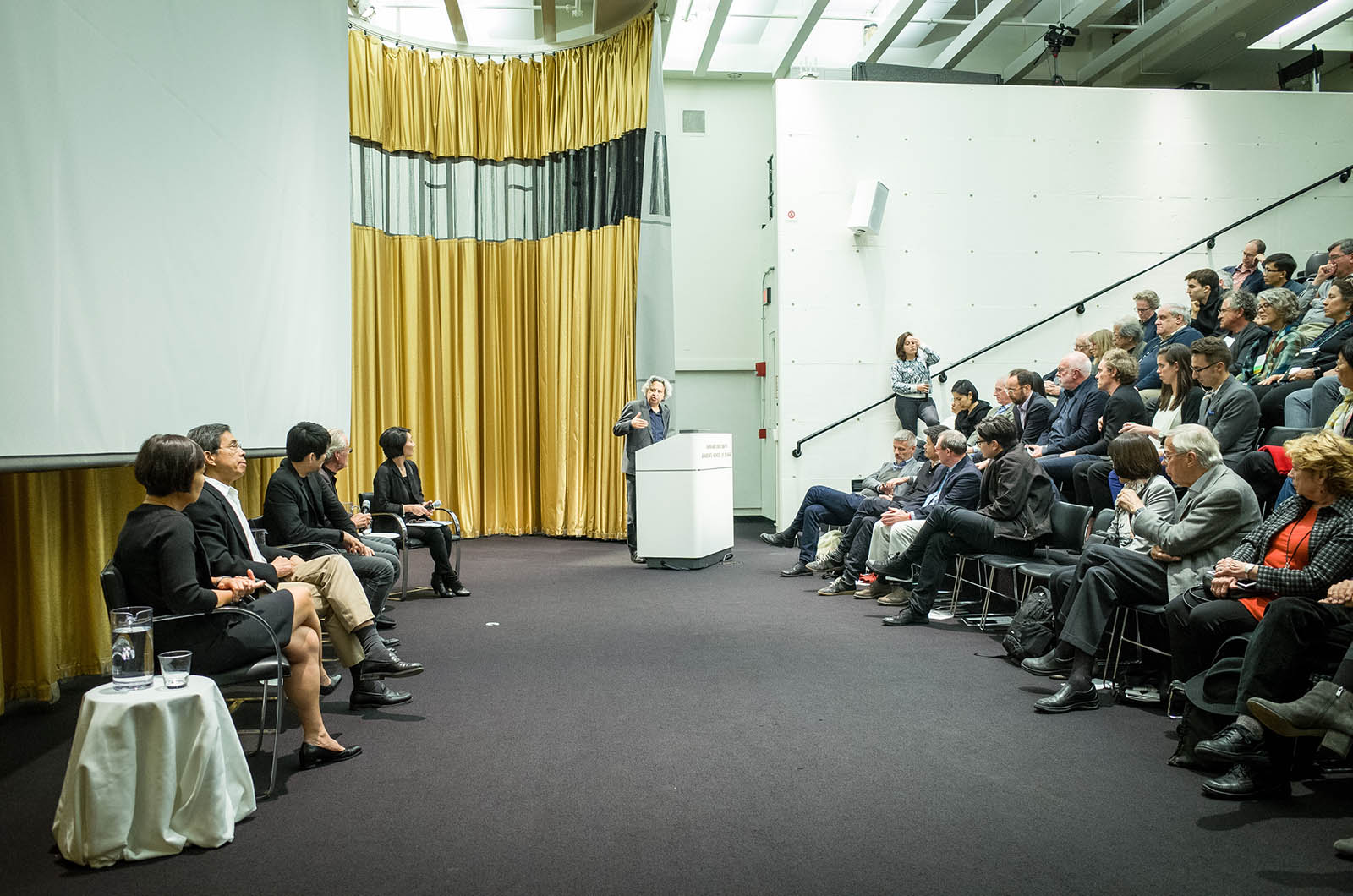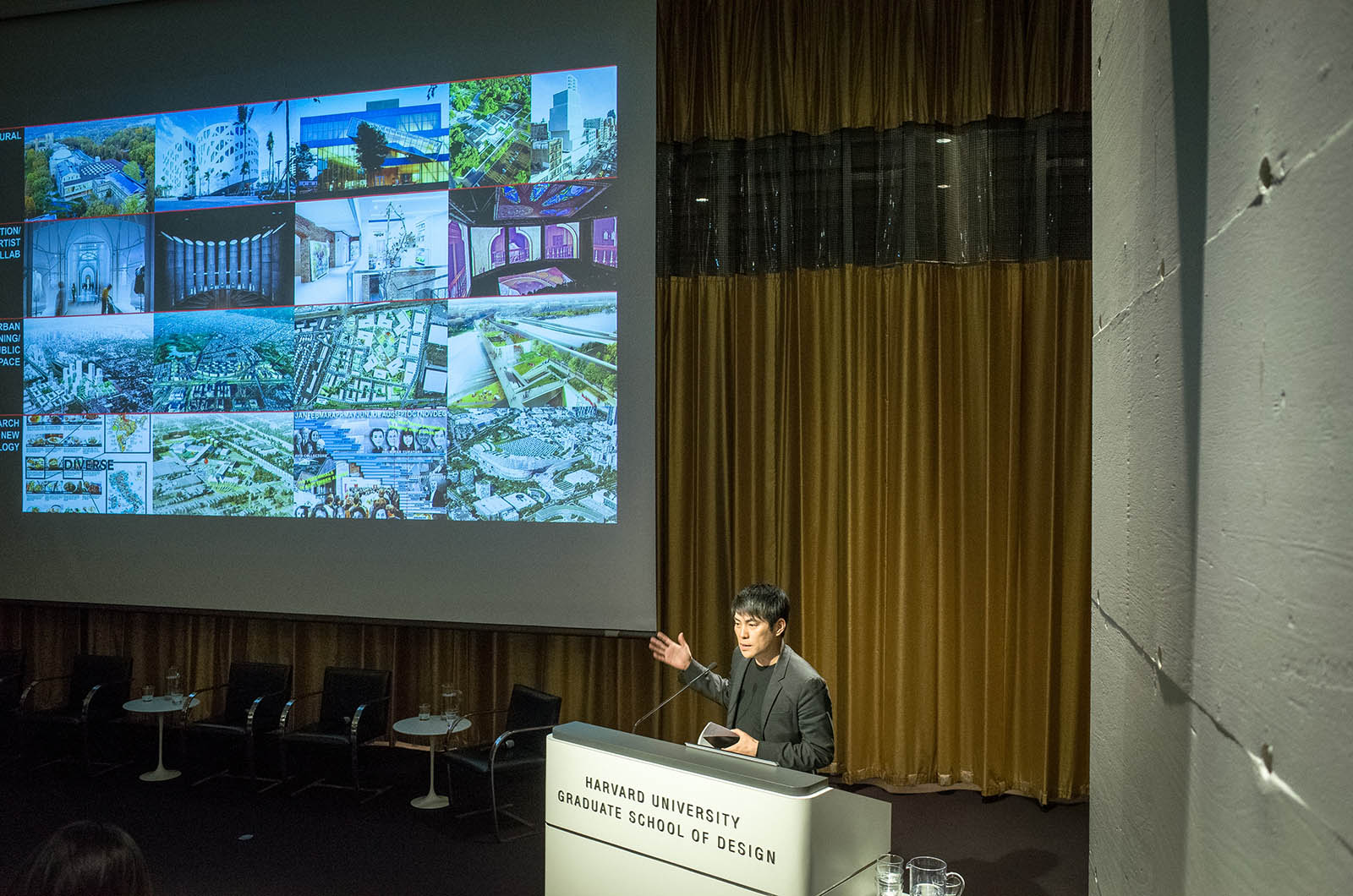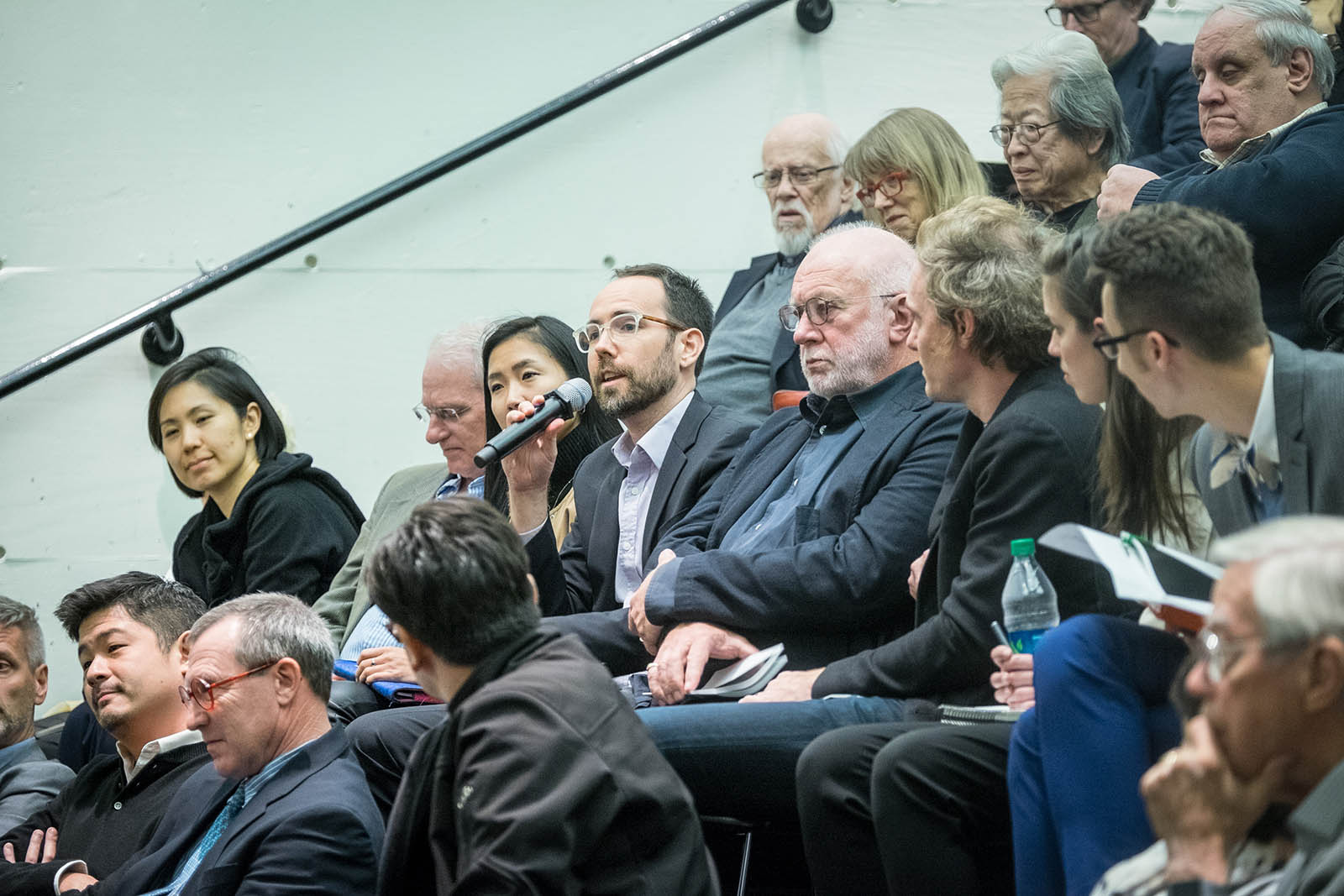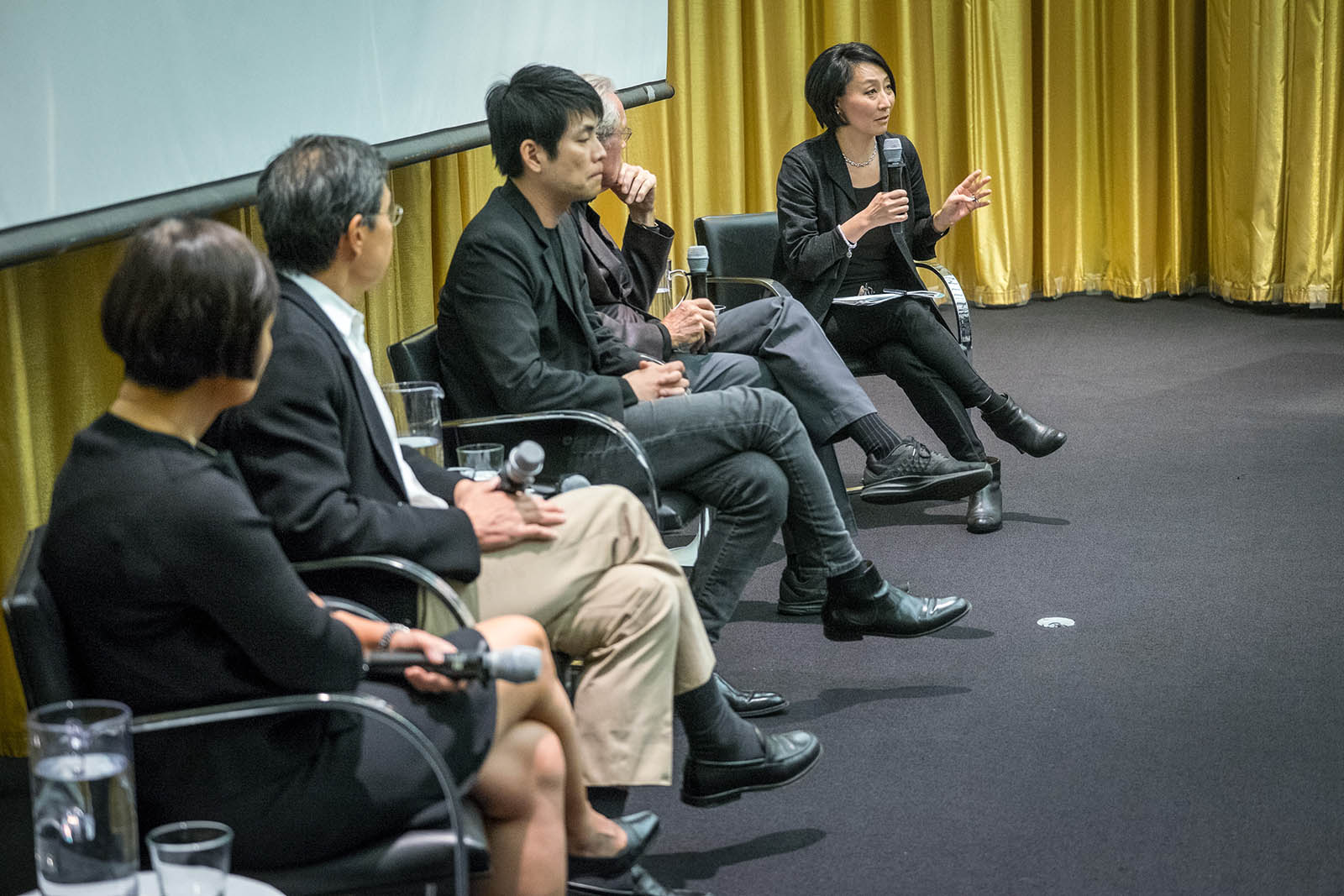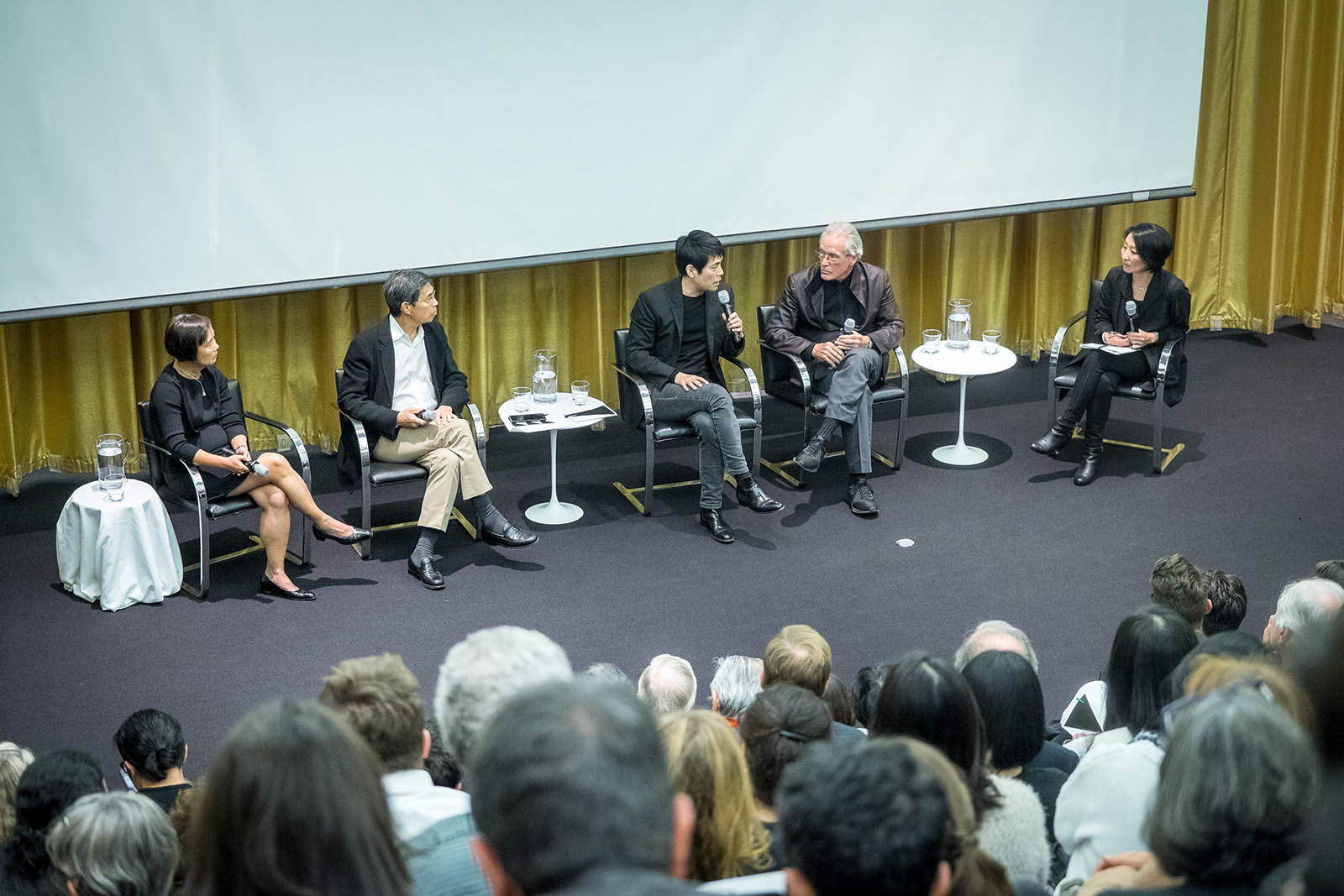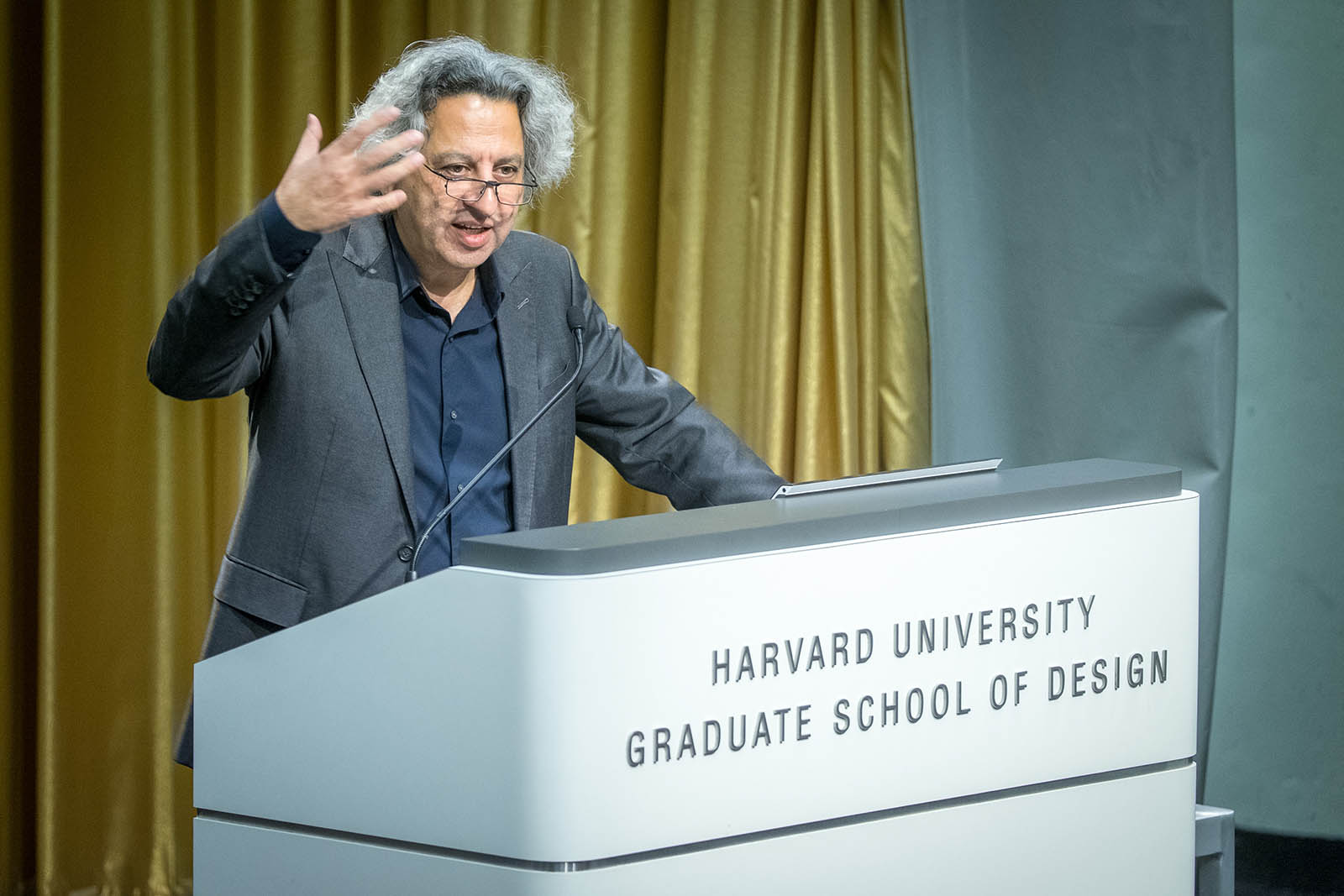Rethinking Pei: A Centenary Symposium

A two-part symposium examining the work and life of I. M. Pei from multiple vantage points. Organized by the Harvard GSD with M+, Hong Kong, and the Faculty of Architecture, The University of Hong Kong.
Ieoh Ming Pei is one of the most celebrated yet under-theorized architects of the twentieth and early twenty-first centuries. Although Pei’s six-decade career is mostly identified with his unwavering interest in cultural synthesis and the power of pure geometrical form, his modes of practice demand further investigation of their intertwinement with the multiple historical and discursive moments of modern architecture. The two-day symposium will include panel discussions and scholarly presentations that showcase new research on Pei’s manifold contributions to the built environment. Notable alumni from Pei’s office will discuss the emergence of a new kind of architectural practice in the postwar era. Among the topics to be addressed in the paper sessions are technological innovations with concrete, the glass curtain wall, and structural designs; Pei’s longstanding affinities for China’s landscape and vernacular traditions; his legacy on major urban spaces in Boston and other cities around the world; and the increasingly global and transnational conditions of architectural production that Pei successfully navigated. Organized with M+, the new museum for visual culture being built in Hong Kong, this symposium is part of a yearlong celebration of the 100th birthday of Ieoh Ming (I. M.) Pei MArch ’46. Both I. M. and his wife, Eileen Pei GSD ’44, studied at the Harvard Graduate School of Design, as did their sons Chien Chung (Didi) Pei, AB ’68, MArch ’72, and Li Chung (Sandi) Pei, AB ’72, MArch ’76. Pei was also an assistant professor of architecture at the GSD. In March the GSD held a panel discussion, led by Harry Cobb AB ’47, MArch ’49, which focused on the formative years of I. M. Pei’s career as well as some of his special friendships, influences, and projects.
A second symposium, co-organized by M+ and the Department of Architecture at the University of Hong Kong, will be held in Hong Kong on December 14-15.
These two symposia are made possible with the generous support of the C Foundation.
Full list of speakers and program schedule:
Thursday, October 12
6:30 pm Introductions and Opening Remarks
6:45 pm Roundtable: Emergence of a Modern Practice
Grace La, moderator
William Pedersen
Li Chung (Sandi) Pei
Shohei Shigematsu
Yvonne Szeto
8:00 pm Conclusion
###
Friday, October 13
9:30 am Panel 1: Technology
Eric Höweler, moderator
Janet Adams Strong: “Continuity and Change: Fine-face Concrete in Physical Manifestation of I. M. Pei’s Approach to Architecture”
Annette Fierro: “Effective Depths: Transparent Domains”
Brett Schneider: “Early Tall Structures in Context”
Leslie Robertson: “Bank of China, Miho Museum and Bridge, and Other Projects”
11:30 am Lunch
12:30 pm Panel 2: Spatial and Formal Practices I
K. Michael Hays, moderator
Daniel M. Abramson: “Vexing Government Center”
Stuart Leslie: “I. M. Pei’s Modern Monastery: the NCAR Mesa Laboratory”
Thomas Leslie: “Brutal Grace: I. M. Pei’s Early Art Centers”
Delin Lai: “Defining the Present Perfect Tense of I. M. Pei’s Space”
2:30 pm Coffee Break
3:00 pm Panel 3: Power, Capital, and People
Seng Kuan, moderator
Edward Eigen: “I. M. Pei and the ‘Big Plan’: The Several Lives of the John F. Kennedy Presidential Library & Museum”
André Bideau: “Between the Superblock and the Pyramid. I. M. Pei and Araldo Cossutta at La Défense”
Cole Roskam: “The Fragrant Hill Hotel: Reassessing the Politics of Tradition and Abstraction in China’s Early Reform Era”
Shirley Surya: “Pei’s Office and Singapore’s Urban Core: Corporate Architecture, Symbolic Aestheticization and Economic Pragmatism”
Kellogg Wong: “I. M. Pei & Partners, the Pei Team, and Singapore”
###
About the speakers
Daniel M. Abramson is professor of architectural history and director of architectural studies at Boston University. Previously he taught at Tufts University. Abramson is the author of several books, most recently Obsolescence: An Architectural History (University of Chicago Press, 2016). Current work includes projects on the American welfare state and on evidence and narrative in architectural history.
André Bideau’s research targets intersections of architecture production, urbanization and urban governance. A focus of his work lies on the socio-economic dynamics of postmodernism and Post-Fordism where he has lectured and published extensively on German architect O.M.Ungers. His current research involves the early development of the La Défense office district in Paris. Bideau has taught at ENSA Paris-Malaquais and at GSD; currently he teaches at Accademia di Architettura in Mendrisio, Switzerland.
Edward Eigen is a historian and scholar whose work focuses on intersections of the human and natural sciences with the built environment in the long nineteenth century. A selection of his essays, On Accident: Episodes in Architecture and Landscape is forthcoming from the MIT Press. His current research examines the landscapes of the modern American presidency, including studies of the “grassy knoll” and Watergate.
Annette Fierro is an Associate Professor and Associate Chair of Architecture at the University of Pennsylvania, where she teaches in design, technology and urbanism. She is also a registered architect and an engineer by training. In 2003, she published The Glass State: The Technology of the Spectacle, Paris 1981-98 (MIT). Forthcoming is her book on the avant-garde of Britain in the 1960’s and its legacies in the architecture of the British High-Tech.
K. Michael Hays is Eliot Noyes Professor of Architectural Theory at the Harvard University Graduate School of Design and Associate Dean for Academic Affairs, as well as Interim Chair for the Department of Architecture. Hays joined the Faculty of Design in 1988, teaching courses in architectural history and theory. Hays has played a central role in the development of the field of architectural theory and his work is internationally known. His research and scholarship have focused on the areas of European modernism and critical theory as well as on theoretical issues in contemporary architectural practice.
Eric Höweler is Associate Professor of Architecture at the Harvard GSD. He teaches in the core studio sequence and offers courses in other areas, including building assemblies. He is a principal of Höweler + Yoon Architecture LLP (HYA). HYA is a multidisciplinary practice working between architecture, art and media. Their projects include architecture, interactive environments, interiors, installations, furniture, concept clothing and artist books. Prior to forming HYA, Höweler was a Senior Designer at Diller + Scofidio where he worked on the Institute of Contemporary Art and the Juilliard School projects, and an Associate Principal at Kohn Pedersen Fox Associates, where he was the senior designer on the 118 story ICC Tower in Hong Kong. He is LEED AP, and a registered architect in state of New York, Massachusetts, Virginia, New Jersey, Rhode Island and the District of Columbia.
Seng Kuan (PhD ’11) is an architectural historian and has written extensively on China and Japan’s postwar architectural culture. He is completing an edited volume on Kazuo Shinohara (Lars Müller). Seng served as editor of an extended interview of I. M. Pei by Fumihiko Maki (a+u, special issue 2008:08), which was published on the tenth anniversary of the Miho Museum. Prior to rejoining the GSD as a faculty member he taught at Washington University in St. Louis.
Grace La (MArch ’95) is Professor of Architecture, Chair of the Practice Platform, and Coordinator of the second-semester architecture core program at the Harvard GSD. She is also Principal of LA DALLMAN Architects, internationally recognized for the integration of architecture, engineering and landscape. Cofounded with James Dallman, LA DALLMAN is engaged in catalytic projects of diverse scale and type. Noted for works that expand the architect’s agency in the civic recalibration of infrastructure, public space and challenging sites, LA DALLMAN was named as an Emerging Voice by the Architectural League of New York in 2010 and received the Rudy Bruner Award for Urban Excellence Silver Medal in 2007. In 2011, LA DALLMAN was the first practice in the United States to receive the Rice Design Alliance Prize, an international award recognizing exceptionally gifted architects in the early phase of their career. LA DALLMAN has also been awarded numerous professional honors, including architecture and engineering awards, as well as prizes in international design competitions.
Delin Lai graduated with PhD Degrees from Tsinghua University and the University of Chicago in 1992 and 2007. He is now Professor of Art History at University of Louisville. He specializes in modern Chinese cities and architecture and their relationship with nationalism, modernism, and Western influence. He is the lead editor of the five-volume book Zhongguo Jindai Jianzhushi (History of Modern Chinese Architecture) published in June 2016.
Stuart Leslie teaches the history of science and technology at The Johns Hopkins University. His architectural writing include studies of Eero Saarinen’s corporate laboratories, the healthcare designs of Bertrand Goldberg and Eberhard Zeidler, laboratories by I. M. Pei and Louis Kahn, Edward Durell Stone’s “Nuclear Taj Mahal” for Pakistan, and the aerospace modernism of William Periera and A.C. Martin Jr. in Southern California. He recently served as the Charles Lindbergh Chair at the National Air and Space Museum.
Thomas Leslie, AIA has taught at Iowa State University since 2000. He has degrees from the University of Illinois and Columbia University. Leslie is the author of Louis I. Kahn: Building Art, Building Science; Chicago Skyscrapers, 1871-1934, and Beauty’s Rigor: Patterns of Production in the Work of Pier Luigi Nervi. In 2013 and 2014, Leslie was a Historic Preservation Fellow at the American Academy in Rome. Prior to teaching he was an associate with Foster and Partners, London.
William Pedersen joined Gene Kohn and Sheldon Fox in 1976 to found Kohn Pedersen Fox Architects. Previous to that he graduated from the University of Minnesota and MIT. In 1975 he was awarded the Rome Prize in Architecture by a jury headed by I. M. Pei. Returning from Rome in 1967, he worked at I. M. Pei and Partners for four years, three of which were on the National Gallery in Washington, DC. Since forming Kohn Pedersen Fox, seven of Pedersen’s buildings have been awarded National Design Awards from the AIA. In 2013 the AIA of New York awarded him their Medal of Honor.
Li Chung (Sandi) Pei is the founding partner of Pei Partnership Architects, a firm he established with his brother, Chien Chung (Didi) Pei, after working at I. M. Pei & Partners from 1976 until 1992. Since then, he has directed the design of over five million square meters of building and large-scale urban development projects in the United States, Mexico, China, Indonesia, and Singapore. Some of his firm’s notable projects include the Chinese Embassy in Washington, DC, Suzhou Museum, Ronald Reagan UCLA Medical Center, and The Centurion luxury condominium building in New York City. The firm has designed projects for BMW, Bank of China, China Institute, Creative Artists Agency, Macao Foundation, Mandarin Oriental Hotel Group, and MIT, among others. He serves on Christie’s Advisory Board and is Vice President of the International Council of the Museum of Modern Art. Sandi Pei graduated from the Harvard GSD in 1976.
Leslie Robertson is an internationally acclaimed structural engineer, who has transformed urban and rural landscapes through innovative designs for over sixty years. Among his many notable designs are the twin towers of the World Trade Center (New York), US Steel Headquarters (Pittsburgh), Bank of China Tower (Hong Kong), Shanghai World Financial Center (China), Suzhou Museum (China), the Meyerson Symphony Center (Dallas), the Museum of Islamic Art, Qatar, and the Miho Museum, Bridge, and Chapel (Japan). A member of the National Academy of Engineering, a Distinguished Member of ASCE, Dr. Robertson has received numerous awards and honors including the IStructE Gold Medal of the U. K., ASCE’s Outstanding Projects and Leaders (OPAL) Award, was ENR’s “Man of the Year,” and the first recipient of the Henry C. Turner Prize. A Distinguished Alumnus of the University of California at Berkeley and recipient of doctoral degrees from Lehigh University, Notre Dame, RPI, and the University of Western Ontario.
Cole Roskam is associate professor of architectural history in the Department of Architecture at The University of Hong Kong. His research examines architecture’s role in mediating moments of transnational exchange between China and other parts of the world. His scholarship has been published in AD, Artforum International, Grey Room, the Journal of Architectural Education, and the Journal of the Society of Architectural Historians, among others.
Brett Schneider was educated as both an Architect and an Engineer as a graduate student at Princeton University completing a Masters in Engineering in 2000. He is currently an Assistant Professor at the Rhode Island School of Design (Department of Architecture) and the Senior Associate at Guy Nordenson and Associates (structural engineers) in New York NY where he has worked since 1998.
Shohei Shigematsu is a Partner at OMA and the Director of the New York Office. Sho has completed a number of cultural projects including Milstein Hall for Cornell University, extension for the Quebec National Art Museum, Faena Forum in Miami Beach and the Costume Institute exhibition at the Metropolitan Museum of Art. He is currently designing an extension to the Albright Knox Art Gallery and a new campus for Facebook.
Janet Adams Strong is an architectural historian (PhD, Brown University). She was engaged to write for I. M. Pei & Partners in 1986, and continued at the firm (now Pei Cobb Freed & Partners) for more than 20 years as documentalist and director of communications. Dr. Strong has independently authored/co-authored/edited more than a dozen books on architecture, including I. M. Pei: Complete Works (2008).
Shirley Surya is Associate Curator of Design and Architecture at M+, where she focuses on researching design and architectural production in greater China and Southeast Asia. She was co-curator of “Building M+: The Museum & Architecture Collection” and “Mobile M+: NEONSIGNS.HK,” and has contributed to exhibitions including “Incomplete Urbanism: Attempts of Critical Spatial Practice” and “Yung Ho Chang & FCJZ: Material-ism. She studied at the University of California, Berkeley, and the Royal College of Art in London.
Yvonne Szeto (MArch ’79) joined Pei Cobb Freed & Partners in 1977 and became a partner in 1999. Over four decades of service, she has played a central role in advancing the firm’s tradition of well-crafted public works, gaining national recognition as a designer of academic and cultural institutions while extending the firm’s global reach with major corporate projects in Europe, Asia and Australia. Her extensive and diverse portfolio of built work illustrates her commitment to creating buildings that engender meaning and identity, and serve their users.
Kellogg Wong is currently Senior Principal at FORM New York. For more than 50 years he served as Associate Partner (now Associate Partner Emeritus), Chief Administrative Architect, and Lead Designer for a wide range of major projects while affiliated with the firm of Pei Cobb Freed & Partners / I. M. Pei & Partners. Kellogg has a special interest in master planning, museums, and landscape design, typically leading design in these areas. Numerous projects on which he collaborated with his mentor, I.M. Pei, have been honored by the AIA, most recently with a 25-Year Award for the Slater House in Washington D.C. Wong also worked with Pei a wide range of major international projects including the Bank of China Tower in Hong Kong, Everson Museum in Syracuse, New York, and Fragrant Hill Hotel in Beijing. More recently, Mr. Wong has led work for the capital Master Plan and its implementation at the United Nations Headquarters in New York; a major new development on Chang’An Boulevard in Beijing; and is completing a study for the development of sustainable cities. In addition, he is actively involved in the community in which he lives including serving on the Planning Commission, the Rye Board of Architectural Review, School Advisory Committee and other civic positions, as well as being a longtime Alderman of his church.
Anyone requiring accessibility accommodations should contact the Public Programs Office at (617) 496-2414 or [email protected].
#GSDEVENTS
